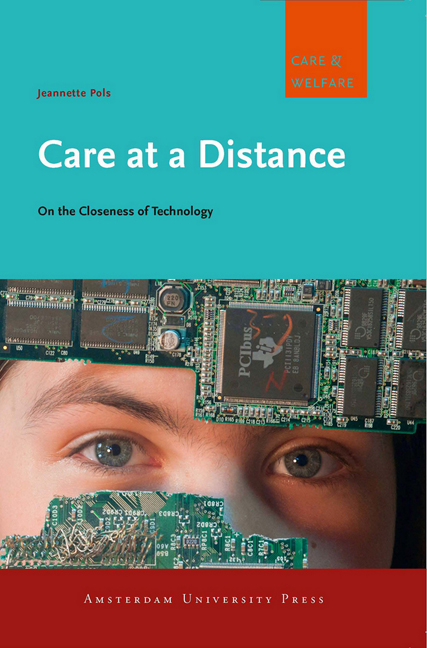Book contents
- Frontmatter
- Contents
- Nightmares, Promises and Efficiencies in care and Research
- Part I Norms and Nightmares
- Part II Knowledge and Promises
- Part III Routines and Efficiencies
- Conclusions: On Studying Innovation
- Acknowledgements
- Appendix: Projects Studied for this Book
- Notes
- References
- Index of Names
- Index of Subjects
4 - Caring for the Self? Enacting Problems, Solutions and forms of knowledge
Published online by Cambridge University Press: 03 February 2021
- Frontmatter
- Contents
- Nightmares, Promises and Efficiencies in care and Research
- Part I Norms and Nightmares
- Part II Knowledge and Promises
- Part III Routines and Efficiencies
- Conclusions: On Studying Innovation
- Acknowledgements
- Appendix: Projects Studied for this Book
- Notes
- References
- Index of Names
- Index of Subjects
Summary
Shaping problems
In this chapter, I look at the ways devices and their users solve particular problems together and how, by enacting remedies together, they shape what these problems are. Problems are defined by particular knowledge (e.g. physiology) within which some variables fit (e.g. overactive angiotensin- converting enzymes) and others do not (e.g. trouble getting to the shops). The second problem would be relevant in the clinic and at home, but doctors may or may not translate it in physiological terms. Hence, the terms describing problems and the practices in which they are enacted matter to the form a certain problem takes.
There are various ways to describe the patients’ problems. Devices contain various forms of knowledge, and patients and carers enact yet other versions in their activities. Using different forms of knowledge means that different facts are relevant to understanding what is wrong with patients, as in the physiology and housekeeping problems described above. You can learn about these forms of knowledge by asking participants in care practices to tell you how they understand and deal with patients’ troubles or by studying the context in which devices are used and facts are enacted.
My analysis in Chapter 3 described norms as containing values as well as directives. Knowledge in care practices contains facts as well as directives. The directives are, for example, on how to obtain knowledge and on how to solve the identified problems. For example, the overactive enzymes suggest treatment with drugs (ACE inhibitors, to be precise), whereas the problem of getting to the shops may demand the purchase of a mobility scooter. The directives connect and enact facts and values simultaneously. Another example: patients and nurses enact the daily process of illness (fact) by frequent measurement (directive) to facilitate quick intervention (value).
This chapter zooms in on the situation of patients, analysing the various problems, solutions and ways of living with chronic disease that are enacted in two care practices by patients using two different types of telecare devices. I demonstrate that both practices contain different kinds of knowledge about the problem and about how the patient cares for this problem. The chapter outlines the kinds of self-care that patients engage in.
- Type
- Chapter
- Information
- Care at a DistanceOn the Closeness of Technology, pp. 63 - 78Publisher: Amsterdam University PressPrint publication year: 2012



